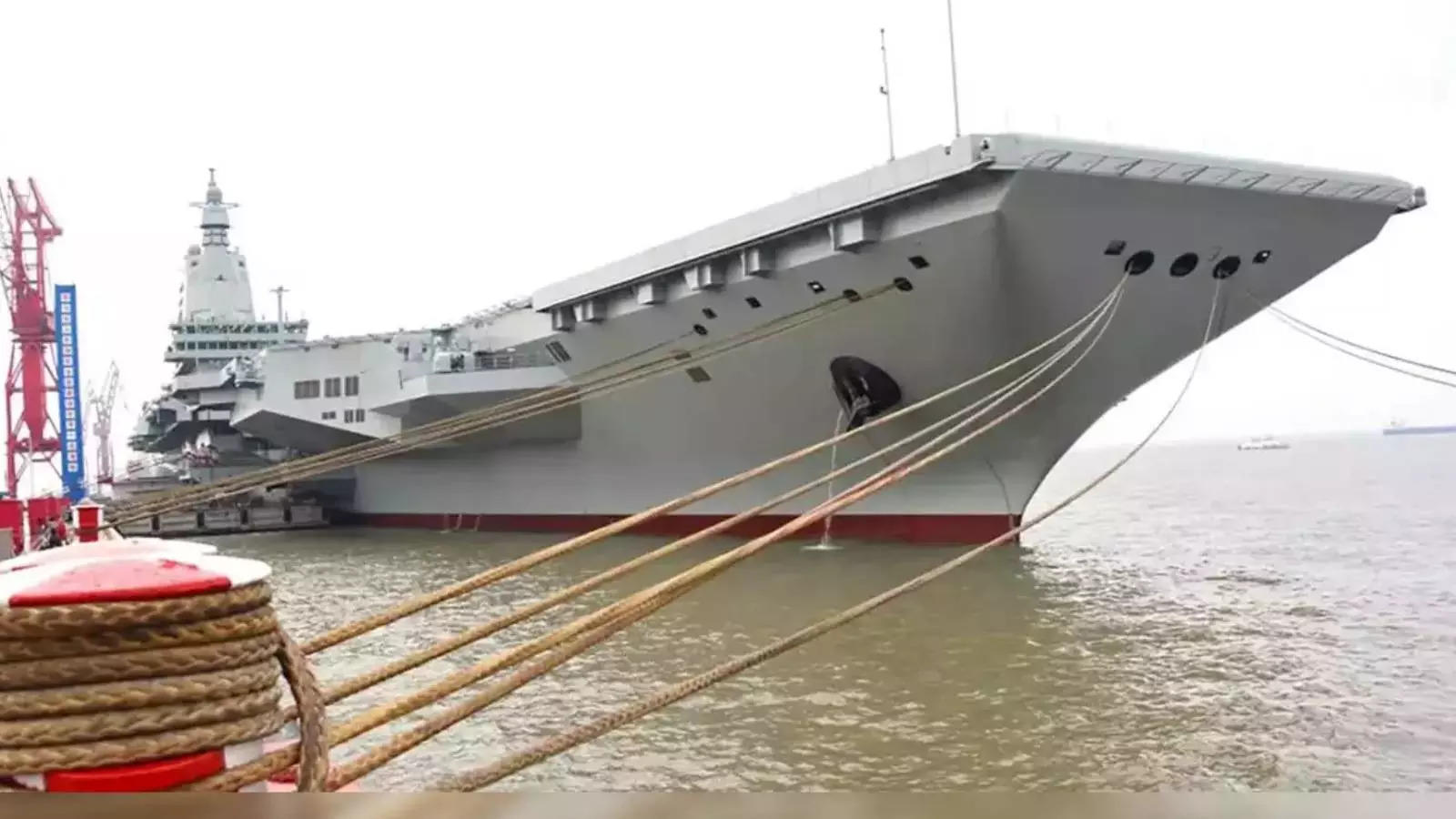China’s super-carrier: Here’s how China’s Fujian aircraft carrier poses new challenges for Indian Navy

“The Fujian represents a significant leap in China’s naval capabilities,” said a military expert.
The Fujian’s successful sea trials mark the beginning of carrier-borne aircraft tests, expected to last up to a year before the carrier is fully operational. This achievement is part of China’s ongoing efforts to enhance its naval strength and project power in the Indo-Pacific region.
“The development of the Fujian underscores China’s commitment to expanding its naval reach,” stated a defense analyst.
China’s first aircraft carrier, the Liaoning, purchased from Ukraine in 1998 and commissioned into the People’s Liberation Army Navy (PLAN) in 2012, served primarily for training and symbolic purposes, showcasing China’s growing military stature.
The Shandong, China’s second carrier and the first domestically manufactured one, entered service in 2019 with modern enhancements over the Liaoning. Additionally, China is developing the J-35, a carrier-based stealth fighter intended for use on the Fujian.”China’s aircraft carrier program is a strategic move to enhance its naval capabilities,” noted a naval strategist.In contrast, India operates two aircraft carriers, INS Vikramaditya and INS Vikrant, and has long sought a larger carrier. However, cost concerns have hindered progress. Building a carrier like the Fujian could cost India $7 billion, with an additional $8 billion for new fighter aircraft. As an interim measure, India is considering a smaller carrier like the INS Vikrant and is negotiating with Dassault of France for 26 Rafale-M fighters to replace aging MiG-29K jets on board.
“The acquisition of the Rafale-M fighters is part of India’s efforts to modernize its naval aviation,” said a defense official.
As of May 2024, nine countries operate frontline aircraft carriers, with the United States leading with 11 operational carriers. China’s advancements in aircraft carrier technology mark a significant development in naval dynamics in the Indo-Pacific, potentially reshaping the strategic landscape in the region.
How China’s technological advancements are shaping the future of warfare
China has emerged as a global leader in technological development, particularly in niche areas crucial for modern warfare. With a focus on anti-satellite weapons (ASAT weapons) and hypersonics, among others, China has not only surpassed the US but is also leveraging these technologies for strategic advantage.
The development and weaponization of ASAT weapons and hypersonics highlight China’s commitment to modernizing its military capabilities. These technologies, along with others, are not only being used to bolster China’s defense but also to set new standards on the international stage.
By setting its own standards, China is influencing other nations to adopt these norms. This strategic move has the potential to reshape the global technological landscape, as more countries are likely to follow suit to reap the associated benefits. As a result, these Chinese standards could eventually become accepted as international standards, fundamentally altering the existing ecosystem.
Source link





